The Vietnamese dong, denoted by the symbol "₫" and currency code VND, has a rich history that reflects Vietnam's economic development and cultural identity. Established in 1946, the dong became the official currency of the Socialist Republic of Vietnam in 1978, replacing the former North Vietnamese đồng and South Vietnamese đồng after the country's reunification. The Vietnamese dong holds significant importance as the primary medium of exchange in Vietnam, used for everyday transactions, business dealings, and financial activities throughout the country. Its history is intertwined with Vietnam's journey towards economic growth and stability, reflecting the nation's resilience and progress over the years. As travelers explore Vietnam, understanding the Vietnamese dong can provide insights into the country's economic landscape, cultural heritage, and daily life. From colorful banknotes depicting national symbols and historical figures to the practicality of using dong in local markets and establishments, the currency serves as a tangible link to Vietnam's past, present, and future.
As of now, the Vietnamese dong exchange rate varies against major foreign currencies like the US dollar (USD), Euro (EUR), British pound (GBP), and Japanese yen (JPY). The exact exchange rate can fluctuate daily due to market conditions and economic factors. Travelers visiting Vietnam are advised to check with reliable sources or financial institutions for the most up-to-date exchange rates before exchanging their money. Additionally, it's recommended to compare rates at different exchange locations, such as banks, exchange counters, and ATMs, to ensure you receive a fair conversion when acquiring Vietnamese dong for your travels.
When exchanging currency in Vietnam, travelers have several options to obtain Vietnamese dong. Here are some tips on where and how to exchange money:
Banks and Exchange Counters: Major cities and tourist areas in Vietnam have banks, exchange kiosks, and authorized money changers where you can convert foreign currency into Vietnamese dong. Banks often offer competitive rates, but be mindful of potential service fees.
ATMs: ATMs are widely available in Vietnam, particularly in urban areas. You can use international credit or debit cards to withdraw Vietnamese dong directly from ATMs. However, note that there may be withdrawal fees, so check with your bank beforehand.
Hotels and Resorts: Some hotels and upscale resorts may provide currency exchange services for guests, but the rates may not be as favorable as those offered by banks or exchange offices.
Local Markets: While it's not common, some vendors and businesses in local markets may accept foreign currency for transactions. However, it's advisable to have Vietnamese dong for day-to-day expenses.
Remember to exchange money at authorized and reputable locations to avoid counterfeit currency or unfair exchange rates. It's also wise to carry a mix of cash and cards for convenience and security while traveling in Vietnam
The Vietnamese dong is issued in both banknotes, each representing different denominations that cater to varying transactional needs in Vietnam. Here is an explanation of the different banknotes in circulation, along with their values and common usage:
₫1,000, ₫2,000, ₫5,000: These lower denominations are typically used for small transactions like buying snacks, paying for public transport, or tipping.
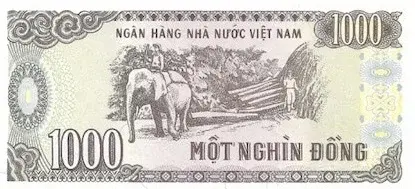
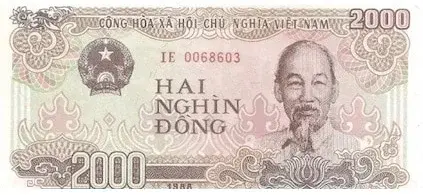
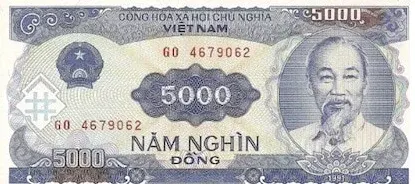
₫10,000, ₫20,000, ₫50,000: These mid-range notes are commonly used for everyday expenses such as meals at local eateries, shopping at markets, or transportation fares.
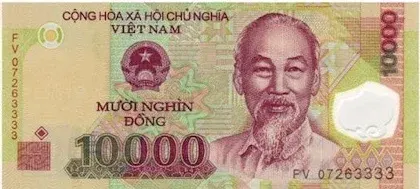
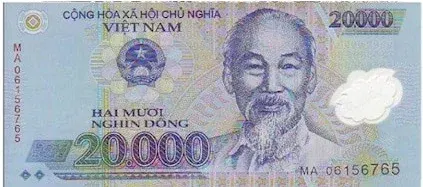
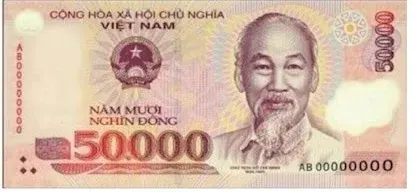
₫100,000, ₫200,000, ₫500,000: These higher denominations are often used for more significant purchases like hotel bills, tours, and upscale dining experiences.
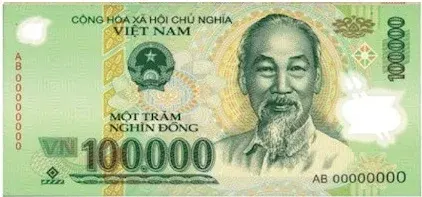
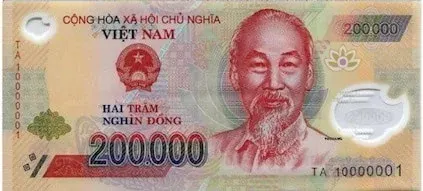
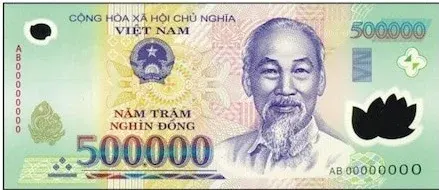
When traveling to Vietnam, it's essential to be mindful of how you handle money to ensure a hassle-free and enjoyable experience. Here are some currency tips for travelers, including advice on using ATMs, carrying cash, and understanding common prices in Vietnamese dong:
Using ATMs: ATMs are widely available in major cities and tourist areas in Vietnam. It's convenient to withdraw Vietnamese dong directly from ATMs using your international credit or debit card. However, be aware of potential ATM fees charged by both your home bank and the local ATM operator. Check with your bank about international withdrawal fees and notify them of your travel plans to avoid any issues.
Carrying Cash: While ATMs are common, it's advisable to carry a reasonable amount of cash for small purchases, markets, or places that may not accept cards. Ensure your cash is in good condition with no tears or damage, as damaged notes may not be accepted. Consider using a money belt or hidden pocket to keep your cash secure while exploring crowded areas or tourist spots. When checking your cash avoid to be close to a road, a motorbike driver may snatch your money.
Understanding Prices in Dong: Familiarize yourself with common prices in Vietnamese dong to avoid overpaying for goods and services. Take note of typical costs for meals, transportation, souvenirs, and activities to have a rough idea of how much you should be paying. Bargaining is common in markets, so be prepared to negotiate prices, especially when shopping at local vendors. To have a better idea of things cost get a look at our daily cost guide.
Currency Conversion: Utilize currency conversion tools or apps to quickly calculate prices in Vietnamese dong when shopping or dining out. This can help you stay within your budget and make informed spending decisions during your trip.
The Vietnamese dong holds more than just monetary value; it carries cultural significance embedded in Vietnamese society. Here are some insights into the importance of the dong in Vietnamese culture and daily life, along with customs or etiquette related to currency exchanges:
Symbol of National Identity: The Vietnamese dong is not just a currency; it embodies the nation's pride, resilience, and history. The images on banknotes often feature national heroes, landmarks, or traditional symbols, reflecting Vietnam's rich cultural heritage and patriotism.
Respect for Money: In Vietnamese culture, money is treated with respect. When handing over cash or receiving change, it is customary to use both hands as a sign of politeness and regard for the transaction. This gesture is a common practice that demonstrates courtesy and appreciation in daily interactions.
Gift-Giving Tradition: The act of giving money as a gift, known as "lì xì" during festive occasions like Tet (Lunar New Year), weddings, or other celebrations, is deeply rooted in Vietnamese customs. The amount of money given symbolizes good luck, prosperity, and blessings for the recipient.
Superstitions and Beliefs: Some Vietnamese people may have superstitious beliefs or taboos related to money, such as avoiding giving or receiving money at night as it is believed to bring bad luck. Understanding and respecting these cultural nuances can enhance your interactions and experiences in Vietnam.
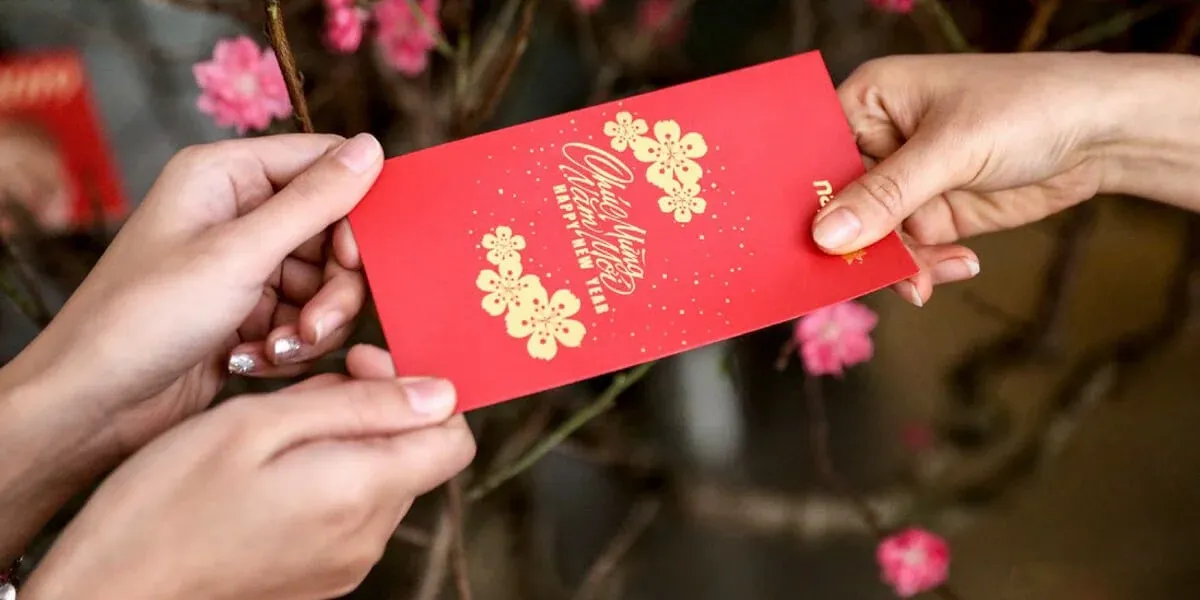
Ensuring the safety and security of your money is crucial while traveling in Vietnam. Here are some tips on how to keep your money secure during your trip:
Use a Money Belt or Hidden Pouch: Invest in a money belt or hidden pouch to store your cash, cards, and important documents securely. Wear it under your clothing to prevent theft or pickpocketing in crowded areas or tourist hotspots.
Divide Your Money: Avoid carrying all your cash and cards in one place. Divide your money into multiple stashes and keep them in separate bags or pockets. This way, if you lose one set of belongings, you'll still have access to funds from other sources.
Carry Only What You Need: Avoid carrying large sums of cash or flashy jewelry that may attract unwanted attention. Only take with you the amount of money you'll need for the day's expenses to minimize loss in case of theft.
Use Hotel Safes: If your accommodation provides a safe or security deposit box, utilize it to store valuables, passports, and extra cash while you're out exploring. This adds an extra layer of protection to your belongings.
Be Cautious with ATMs: When using ATMs, choose machines located in well-lit areas or inside banks. Check the card slot for any suspicious devices that may be used for card skimming. Cover the keypad when entering your PIN for added security.
Notify Your Bank: Inform your bank or credit card company of your travel plans to Vietnam. This prevents any unexpected card blocks due to international transactions and allows them to monitor for any suspicious activity.
Stay Vigilant: Stay aware of your surroundings, especially in crowded places or markets where theft might occur. Keep a close eye on your belongings and be cautious of distractions used by pickpockets.
Vietnam is generally considered a safe destination for tourists. However, like any other travel destination, it's essential to stay alert and exercise caution to ensure safety and well-being.
While the overall crime rate in Vietnam is relatively low, petty crimes such as pickpocketing, bag snatching, and scams targeting tourists can occur, especially in crowded areas or popular tourist spots. To stay safe, remain vigilant, keep an eye on your belongings, and avoid displaying expensive items that may attract unwanted attention.
By staying alert, being mindful of their surroundings, and taking basic precautions such as using secure accommodation, carrying limited cash, and avoiding risky situations, you can enjoy all that Vietnam has to offer while minimizing potential risks. With awareness and common sense, you can have a memorable and safe experience exploring the beauty and culture of Vietnam.
ทำไมต้องจองกับ YES MY TRIPS?
1. จองโดยตรงทางออนไลน์และเพลิดเพลินไปกับประสบการณ์ที่ไม่ยุ่งยาก: เข้าถึงราคาค่าโดยสารที่ดีที่สุด ความพร้อมในการให้บริการแบบเรียลไทม์ และการยืนยันที่รวดเร็ว
2. ตัวเลือกการเดินทางที่ยืดหยุ่น: เลือกจากชั้นเรียนและตารางเวลาที่หลากหลาย
3. การมองเห็นห้องว่างที่ชัดเจนเพื่อวางแผนการเดินทางของคุณอย่างมั่นใจ: ควบคุมแผนการเดินทางของคุณด้วยฟีเจอร์ความพร้อมให้บริการที่โปร่งใสของเรา
4. การเลือกแผนที่ที่นั่งแบบเรียลไทม์ เลือกจุดที่สมบูรณ์แบบของคุณ: ดูและเลือกที่นั่งที่คุณต้องการได้อย่างง่ายดายจากแผนที่เชิงโต้ตอบ
5. มีราคาสำหรับเด็กทำให้การเดินทางแบบครอบครัวมีราคาไม่แพงมากขึ้น: เริ่มวางแผนการเดินทางแบบครอบครัวของคุณวันนี้ และรับประโยชน์จากราคาเด็กพิเศษของเรา!
6. สำรวจตัวเลือกการชำระเงินที่หลากหลายเพื่อความสะดวกของคุณ: เพลิดเพลินไปกับประสบการณ์การชำระเงินที่ราบรื่นและทำการจองของคุณให้เสร็จสิ้นได้อย่างง่ายดาย
7. รับตั๋วทางอีเมลเพื่อให้เข้าถึงได้ง่าย: เพียงคลิกตั๋ว คุณก็มุ่งความสนใจไปที่การวางแผนการเดินทางของคุณได้